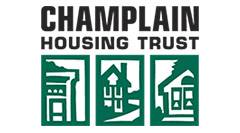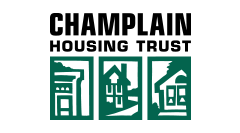The commentary below was co-authored by Elizabeth Bridgewater, Executive Director of Windham & Windsor Housing Trust; Connie Snow, interim Executive Director of Downstreet Housing & Community Development; and Michael Monte, CEO of Champlain Housing Trust.
What’s Missing in Governor Scott’s “Missing Middle” Homeownership Proposal?
A tremendous amount of attention is being paid to Vermont’s housing challenges, which many call a crisis. We don’t disagree.
Thankfully, our elected officials are prioritizing housing and have invested significantly in the past two years to address the inequities in access to housing and shelter, and more is being discussed in the committee rooms at the State House.
Everywhere you turn, this issue has the capacity to stop you in your tracks: employers can’t hire for lack of housing, a couple of thousand Vermonters and hundreds of kids are living in motels, refugees from war-torn countries are arriving with few housing options on the horizon, white Vermonters are three times more likely to own their home than Black ones, some landlords are putting their tenants at risk of displacement or eviction, and Covid-19 or climate migrants scoop up homes sight unseen at skyrocketing sales prices.
These factors – plus the fact that low-wage workers, BIPOC households, and disabled adults already had housing barriers before the pandemic – collectively demonstrate the inability of our profit-driven housing system to adequately fulfill Vermonter’s housing needs, and demands public intervention to prevent our housing crisis to turn into a full blown economic and social failure.
As State rushes to address this housing crisis, we can’t abandon Vermont’s longstanding commitment to programs that create permanently affordable housing when we use tax payer dollars. Tens of thousands of Vermonters have benefited from the security and stability because of this overarching State policy over the past thirty years.
The latest series of proposals from Governor Scott builds upon prior appropriations by the Legislature to ensure that more low and moderate income Vermonters have a place to live that’s affordable, and adds in a brand new program to help middle income Vermonters buy a home. This new program – the “Missing Middle Homeownership Program” – is included in S.226, what’s been called the Omnibus Housing Bill, but the House has put off including it in their budget to better understand the proposal.
The “missing middle” earn too much to qualify for traditional affordable housing programs but don’t earn enough to buy the home they want. Often we hear complaints that the “missing middle” is outbid when they try to buy a home. Officials point to nurses and teachers when describing who has been missed in our housing response.
We have an opportunity to address these Vermonter’s needs with the one-time federal influx of American Rescue Plan Act dollars – and it’s critical that we do it right. The Governor’s proposal smartly aims to solve a structural challenge that all housing developers are facing: it simply costs more to build a modest home than a mortgage lender says it’s worth. Fixing that structural issue seems like a no brainer.
But the program also proposes to subsidize homes even deeper to sell them below market value, and this is where there’s a missing piece to the “Missing Middle” program.
The program could be transformational if it created permanently affordable homeownership. But as structured, it may end up being a type of housing lottery for a few lucky buyers, and it won’t provide the same return for the State’s investment that successful permanently affordable programs such as shared equity homeownership or Habitat for Humanity chapters offer.
Including permanent affordability in the proposal could ensure that when owners sell their home, the property will still be affordable to future nurses, teachers, or administrative professionals. Other middle income Vermonters could be guaranteed the same opportunity today’s middle income receive.
We’ve fulfilled this promise of creating lasting assets with all of the State appropriations to the Vermont Housing & Conservation Board for rental housing; this concept should be doubly upheld when we provide homeownership and wealth building opportunities for our citizens.
This underlying foundation of public policy in Vermont is a critical one. We encourage the public, media, lawmakers and other public officials to review this proposal carefully and critically as it works through the legislative process. Investment in homeownership for middle income Vermonters has merit, and programs should be crafted to uphold Vermont’s longstanding policy to put public dollars into homes that will remain affordable forever.


